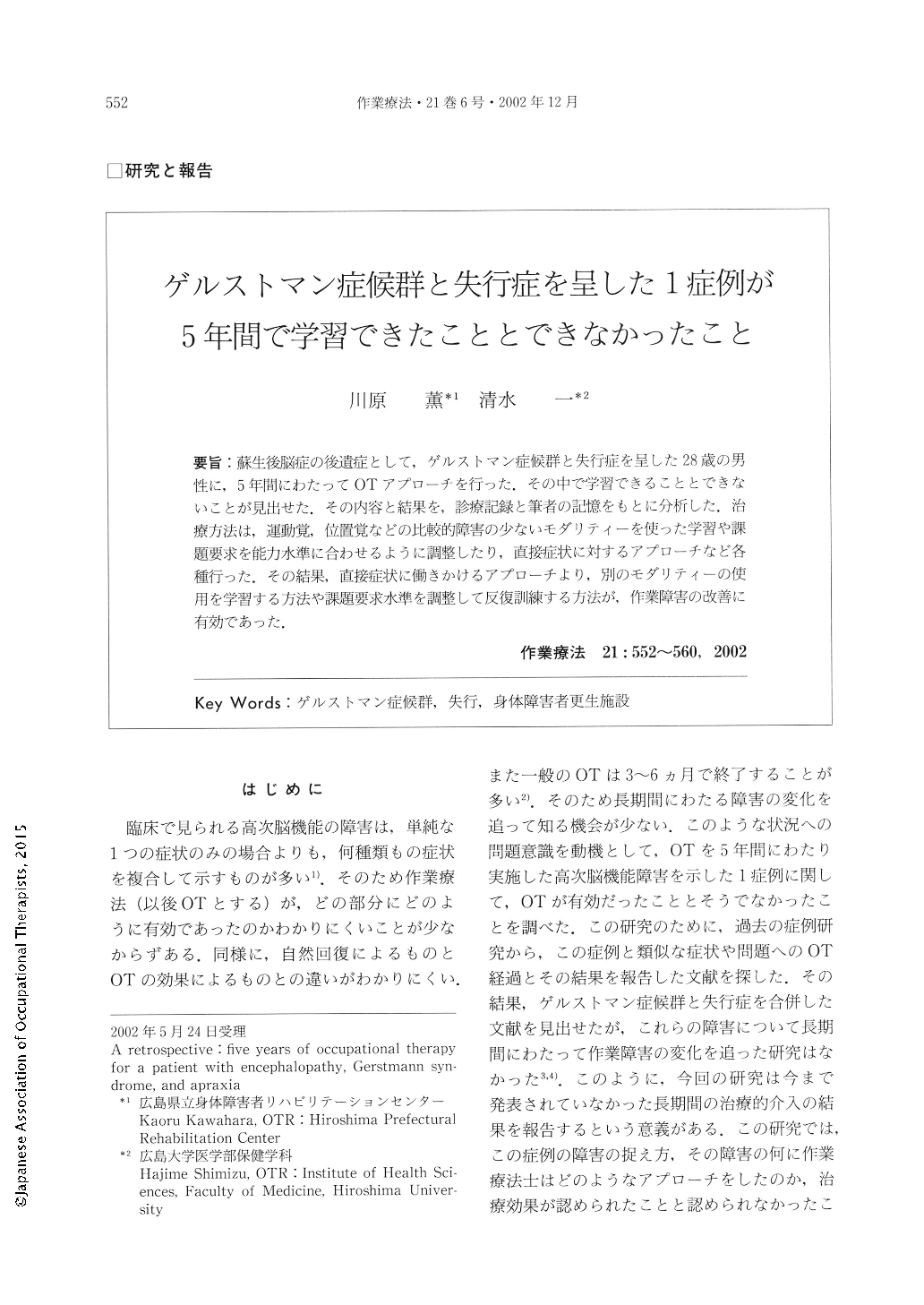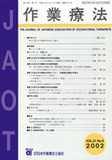Japanese
English
- 販売していません
- Abstract 文献概要
- 1ページ目 Look Inside
- 参考文献 Reference
- サイト内被引用 Cited by
要旨:蘇生後脳症の後遺症として,ゲルストマン症候群と失行症を呈した28歳の男性に,5年間にわたってOTアプローチを行った.その中で学習できることとできないことが見出せた.その内容と結果を,診療記録と筆者の記意をもとに分析した.治療方法は,運動覚,位置覚などの比較的障害の少ないモダリティーを使った学習や課題要求を能力水準に合わせるように調整したり,直接症状に対するアプローチなど各種行った.その結果,直接症状に働きかけるアプローチより,別のモダリティーの使用を学習する方法や課題要求水準を調整して反復訓練する方法が,作業障害の改善に有効であった.
A 28-year-old man, with Gerstmann syndrome and apraxia, resulting from a postanoxic encephalopathy, recieved 5 years of occupational therapy (OT) intervention.
The OT intervention mainly addressed activities of daily living dysfunction.
The author reviewed the progress notes kept during the 5 years of OT intervention, retrospectively. Both the effectiveness and uneffectiveness of OT intervention and objectives were considered.
The patient learned to complete tasks that include less then 3 steps that are performed daily, that are simple and done unilaterally, and that include simultaneous bilateral motions.
Lowering the task demand level and using a comparatively intact modality are also effective methods for avoiding dysfunction in activities of daily living.
Some dysfunction persisted regardless of 5 years of OT intervention.

Copyright © 2002, Japanese Association of Occupational Therapists. All rights reserved.


